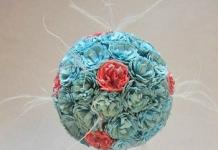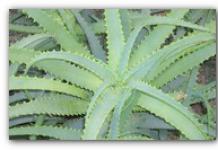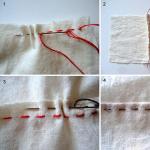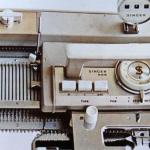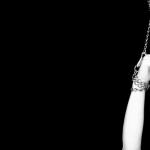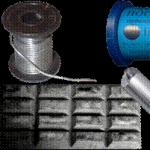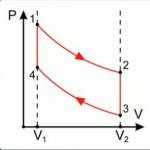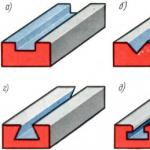Bead - a project dedicated to beads and beaded needlework. Our users are novice beadmakers who need tips and support, and experienced craftsmen who cannot imagine their life without creativity. The community will be useful to anyone who has an irresistible desire to spend their entire salary on bags of coveted beads, rhinestones, beautiful stones and Swarovski components in a bead shop.
We will teach you how to weave very simple jewelry, and help you understand the intricacies of creating real masterpieces. Here you will find diagrams, master classes, video tutorials, and you can also directly ask for advice from famous bead makers.
Do you know how to create beautiful things from beads, beads and stones, and do you have a solid school of students? Yesterday you bought the first bag of beads, and now you want to weave a bauble? Or maybe you are the head of a reputable printed publication dedicated to beads? We all need you!
Write, tell about yourself and your work, comment on the entries, express your opinion, share tricks and tricks when creating the next masterpiece, share your impressions. Together we will find answers to any questions related to beads and bead art.
The orchid flower is considered to be the most beautiful and unique plant on our earth. A wide variety of types and colors is striking in its versatility. This flower is widely distributed in countries with warm and hot climates. Its natural habitat is on the bark of trees. Nowadays, orchids have become favorite home flowers that are on the windowsill of almost every housewife. But not always this plant can take root at home. If you want to capture its flowering for a long time, then embroider an image of an orchid on the canvas using the cross technique. In this case, such a picture will decorate your interior for a long time.





The beauty of an embroidered orchid
Orchid cross-stitching is practically no different from embroidering other flowers. To embroider the first scheme, you will need the following list of materials in your work:
- floss threads that will match the key;
- canvas and hoops;
- disappearing marker;
- needle with scissors;
- passe-partout;
- scheme.

The presented scheme involves a relatively small number of different shades of threads. Therefore, any novice needlewoman who does not have much free time will cope with such work. Basically, the entire image is embroidered using the cross stitch technique. And at the very end, you need to make a “back needle” stitch to give a distinct outline to the picture.
It is recommended to soak the finished product in cool water, and then hang it to dry without wringing it out. Iron the canvas with a warm iron from the wrong side and insert into a beautiful mat. This item would make a wonderful gift for any occasion. 
The following diagram depicts a branch of a pink orchid. This is truly a work of art. The flower is so beautiful that it is impossible to take your eyes off. You can embroider a pattern, both from the center and from any corner of the canvas, that is, everyone does as he pleases. Due to the fact that a small number of color shades are used in the key, you will accurately cope with the task without making a mistake. 


Do not forget that you can not make any knots on the wrong side of the canvas. The stitches should look neat on both sides of the cross stitch. The end of the thread is simply fastened under a few stitches. 
Another painting depicts a whole bunch of orchids standing in a vase. The inflorescences themselves are somewhat reminiscent of the wings of butterflies, which are frozen in their flight. It may seem that this is an easy task, but you still have to be patient. Cross stitches are performed in two additions of floss. The easiest way to start embroidering is not with flowers, but with a vase, since the buds themselves are very tiring to decorate. The main difficulty lies in the embroidery of the central part of the flower, as there are many shades of pink in it. Be sure to constantly refer to the diagram during the workflow. For greater convenience, you can mark with a marker those places that you have already embroidered. So you will quickly orient yourself and find the sector that has not yet been touched by a needle and thread. 
The painting measures one hundred and thirty-one stitches high and ninety-nine stitches wide. The area of the product is 24 by 18 cm. After completing the cross technique, proceed to embroider some elements with a back stitch. They are made with a thread in one addition, and the color should be chosen the darkest of pink. 
As you can see, cross-stitching an orchid is not as difficult as it might seem at first glance. But the finished product is worth it to create. After all, orchids are very chic flowers.
If you are a creative person and want to create charming pictures with your own hands, you will certainly like the schemes for embroidery with beads of TM "Orchid". It is not difficult to master this kind of needlework, and each person will successfully cope with the task. The online store "Embroider, Needle" in Moscow offers to buy these goods inexpensively. Their price will be affordable to everyone.
Variety of goods
Schemes for embroidery with beads TM "Orchid" have a different thematic focus. On the site, you can choose a set with which it is easy to embroider, for example, a landscape. It will decorate any room and will look great both in the office and at home. Here you can also buy an embroidery pattern depicting outlandish animals, colorful still lifes, and beautiful household items. Blanks for sewing bags are available to customers. If you carefully look at the patterns of embroidery TM "Orchid", which are presented in the store, you will certainly find your favorite plot.
People who are deeply passionate about this type of needlework have a great chance to create paintings for sale. Today, these products, made according to the schemes, are very popular among many people. Their cost is quite high. This makes it possible to turn your favorite hobby into a source of decent income. Embroidered works can be given to loved ones and colleagues for significant events or for no reason.
What is included
Embroidery TM "Orchid" is created using a special set. It consists of the following elements:
- patterned fabrics. A drawing is partially embroidered on it;
- instructions for the needlewoman with recommendations.
Additional beads can be purchased. The store presents both miniature versions of patterns and larger ones, so you can embroider a product for every taste. The low price of products, their diversity and impeccable quality of materials make the decision to buy these products an excellent choice for every client. Order patterns and start creating today!
Orchid is one of the most beautiful and mysterious plants. A wide variety of types and colors amazes the imagination of a person. This flower is widely distributed in countries with warm and hot climates. Its natural habitat is on the bark of trees. Today, orchids have become favorite home flowers that are on the windowsill of every housewife. The plant does not always take root in the room. If you want to capture its flowering for a long time, embroider an image of an orchid with a cross on the canvas, and the picture will decorate the interior of the house forever.

Cross-stitching an orchid flower is no different from other needlework of this type. To embroider the first scheme, you will need the following list of materials:
- floss threads that will match the key;
- canvas and hoops;
- disappearing marker;
- needle with scissors;
- passe-partout;
- scheme.
 In the presented scheme, a small number of shades of threads are involved. The image is embroidered with a cross. And at the very end, make a “back needle” stitch to give a distinct outline to the picture.
In the presented scheme, a small number of shades of threads are involved. The image is embroidered with a cross. And at the very end, make a “back needle” stitch to give a distinct outline to the picture.
Soak the finished product in cool water, and dry without wringing. Iron the canvas with a warm iron from the wrong side, and insert it into a beautiful mat. This item would make a wonderful gift for any occasion.
 The following diagram depicts a branch of a pink orchid. This is a real work of art. The flower is so beautiful that it is impossible to look away. You can start work from the center or from any corner of the canvas, as you like.
The following diagram depicts a branch of a pink orchid. This is a real work of art. The flower is so beautiful that it is impossible to look away. You can start work from the center or from any corner of the canvas, as you like.
Do not forget that you can not make any knots on the wrong side of the fabric. The stitches should look neat on both sides of the embroidery. The end of the thread is simply fastened under a few stitches.
 Another painting depicts a whole bunch of orchids standing in a vase. The inflorescences resemble the wings of butterflies frozen in flight. Cross stitches are performed in two additions of floss. The easiest way to start embroidering is not with flowers, but with a vase, since the buds themselves are tedious to decorate. The main difficulty lies in the embroidery of the central part of the flower, because there are many shades of pink in it. Be sure to constantly refer to the diagram during the workflow. Mark with a marker those places that have already been embroidered. So you will quickly orient yourself and find the sector that has not yet been touched by a needle and thread.
Another painting depicts a whole bunch of orchids standing in a vase. The inflorescences resemble the wings of butterflies frozen in flight. Cross stitches are performed in two additions of floss. The easiest way to start embroidering is not with flowers, but with a vase, since the buds themselves are tedious to decorate. The main difficulty lies in the embroidery of the central part of the flower, because there are many shades of pink in it. Be sure to constantly refer to the diagram during the workflow. Mark with a marker those places that have already been embroidered. So you will quickly orient yourself and find the sector that has not yet been touched by a needle and thread.

The painting measures one hundred and thirty-one stitches high and ninety-nine stitches wide. The area of the product is 24 by 18 cm. After completing the cross technique, proceed to embroider the elements with a back stitch. They are made with a thread in one addition, and choose the darkest color from pink.

Cross stitch patterns












Video: Orchids embroidered with cross stitch
Master - class 1 on the technique "Graceful surface"
Stitch description.
All photos are enlarged. Embroidered floss (cotton) in one thread on calico fabric.
Make stitches no more than 5-7 mm or less, in case of increase stitches, the thread will stick out of the overall fabric, the optimal stitch is 5 mm or less. The stitches should be of the same size, decreasing or increasing the length of the stitches should be gradual in order to evenly and uniformly fill the embroidered space. The stitch size is selected based on the part to be embroidered. Do not be afraid of the gaps between the rows of stitches, they can always be corrected or filled separately. Further in the exercises, I will indicate ways to correct the resulting gaps.
Lead stitch length 5mm. Thread floss cotton.
1)

2)

The leading thread is very simple and consists of reverse grabbing stitches, lining up. The snag on the fabric is minimal. For the convenience of inserting the needle into the fabric, from the inside at the place where the needle hooks the fabric, press with two fingers, forming a bulge, this will allow more comfortable stitching.
3)
4)
Pay close attention:
With each stitch, the thread should remain between the needle and the fabric of the embroidered rows, as indicated in figure (3), which will help prevent the leading thread from detaching from the main fabric, avoiding gaps between rows of laid stitches.
The entry and exit of the needle into the fabric should be parallel to the previously laid thread.
When sewing subsequent rows of threads, the grip of the fabric with a needle is required to be carried out under the previously laid thread, as indicated in Figure (4), so that the leading thread is tightly pressed against the previous one and fills the embroidered space without breaks.
Shading of straight spaces and correction of delamination of the leading thread.
This exercise will allow you to paint straight spaces with threads.
5)
6)
7)
8)
Shading straight spaces
Make several rows of leading thread, stacking them tightly together, using the principles worked out in the "Stitch Description" section. Stitch length 5-7 mm.
Important:
- With each stitch, the thread should remain between the needle and the fabric of the embroidered rows.
- The entry and exit of the needle into the fabric should be parallel to the previously laid thread.
- The capture of tissue with a needle must be carried out under a previously laid thread.
Correction of detachment of the main thread.
If the previously stated instructions are not followed, the thread detaches, forming a gap, figure (6).
Embroider further on the reverse pass insert the needle in the center of the detachment, after pressing the thread to the main fabric as shown in figure (7). Complete the exercise by lining the fabric with separate stitches, figure (8)
Exercise circle filling and correction of thread detachment.
The floss thread used is cotton, in one thread. Filling with concentric circles towards the center.
9)
10)
11)
Detachment correction.
Insert the needle under the previously laid threads, tighten the loop, press the thread to the main fabric.
12)
13)
14)
"S" shaped canvas and possible errors.
This exercise will allow you to paint details with curves of any complexity.
The thread used in the floss exercise is cotton, embroider with one thread.
15)
16)
Mark on the fabric, using the leading thread, the outline shown in the figure (15), start embroidering the fabric (S) shaped.
Key recommendations: The closer to the top of the bend, the smaller the stitch, when leaving the top of the bend, you need gradually return by the initial stitch length, otherwise the stitch density will increase and the fabric of stitches will be thinner at the end. This is fixable by laying additional rows on a refined space. By the same principle, the inner part of the bend is also embroidered, in this case there is a high probability of an error (detachment of the leading thread), corrected in the same ways that you worked out in the previous exercises.
Remember to gradually adjust the stitch length, which will allow the embroidered fabric to be even and uniform.
This exercise will allow you to paint over expanding and contracting space.Triangle
The actual size of the side of the triangle is 2 cm, the floss thread is cotton in one thread.
17)

18)

19)

20)

Mark on the fabric, using the leading thread, in two passes the outline of the triangle. Stitch length 5-7 mm. Break it into reference lines, as shown in the figure (17). The distance between the reference lines should be the smaller the better.
Shading of the triangle must be done by sewing separately each space between the reference lines, stitching alternately, then from one reference line, then from the other, tending to the center of the space to be sewn, figure (18). In this way, sew up the entire space, figure (19).
With the same principle, in turn, sew up all the remaining space between the reference lines. After filling with individual stitches, smooth out any irregularities, figure (20).
Please note that if the distance between the reference lines is large, then the filling of the space will be in the form of a Christmas tree, which is undesirable, so I recommend making more reference lines, which will allow you to lay the stitches strictly in the required directions.
Mixing threads of different colors and mixing others into the main fabric.
This exercise is very important, it will teach you how to achieve smooth color transitions when mixing colors.
Without infusion into each other, the colors visually separate.
The thread used in the exercise is cotton floss, embroider with one thread.
21)

22)

23)

24)

Embroider a canvas with an uneven edge, the mixing edges must be stitched randomly or guided by the reproduction, adjusting the depth of the passes, figure (21). Continue the top edge with the adjacent color, drawing (22), with the next pass, start pouring into the color, laying the stitches in the split between the rows of laid threads, delving into the canvas of the embroidered rows for one or two stitches, drawing (23), in the same way finish the canvas, aligning separate stitches.
Pour colors into each other with passes of one, two stitches or more, then you will get soft transitions from color to color. The depth of the color passages must be adjusted, guided by the illustration, in case of insufficient infusions, supplement with separate stitches. On small parts, the depth of injection is reduced.
The main auxiliary elements of embroidery are separate mottling or pouring into the main canvas, and dotted drawing.
mottling
Draping is the addition of dots of a different color to the main canvas.
The basic rule in making patches includes: Stitching through one thread of the main fabric. Drawings "a" and "b"
With frequent laying of stitches, the auxiliary color of the stitching begins, with a decrease in the density of the stitching, the auxiliary color dissipates. Figure "c"
A)

b)

V)

Infusion
Infusion is the mixing of color into the main fabric with ordinary stitches, do all the transitions from side to side with an additional infusion on the reverse side of the base


Ink drawing
Ink drawing allows you to draw small details on the main embroidered canvas.


